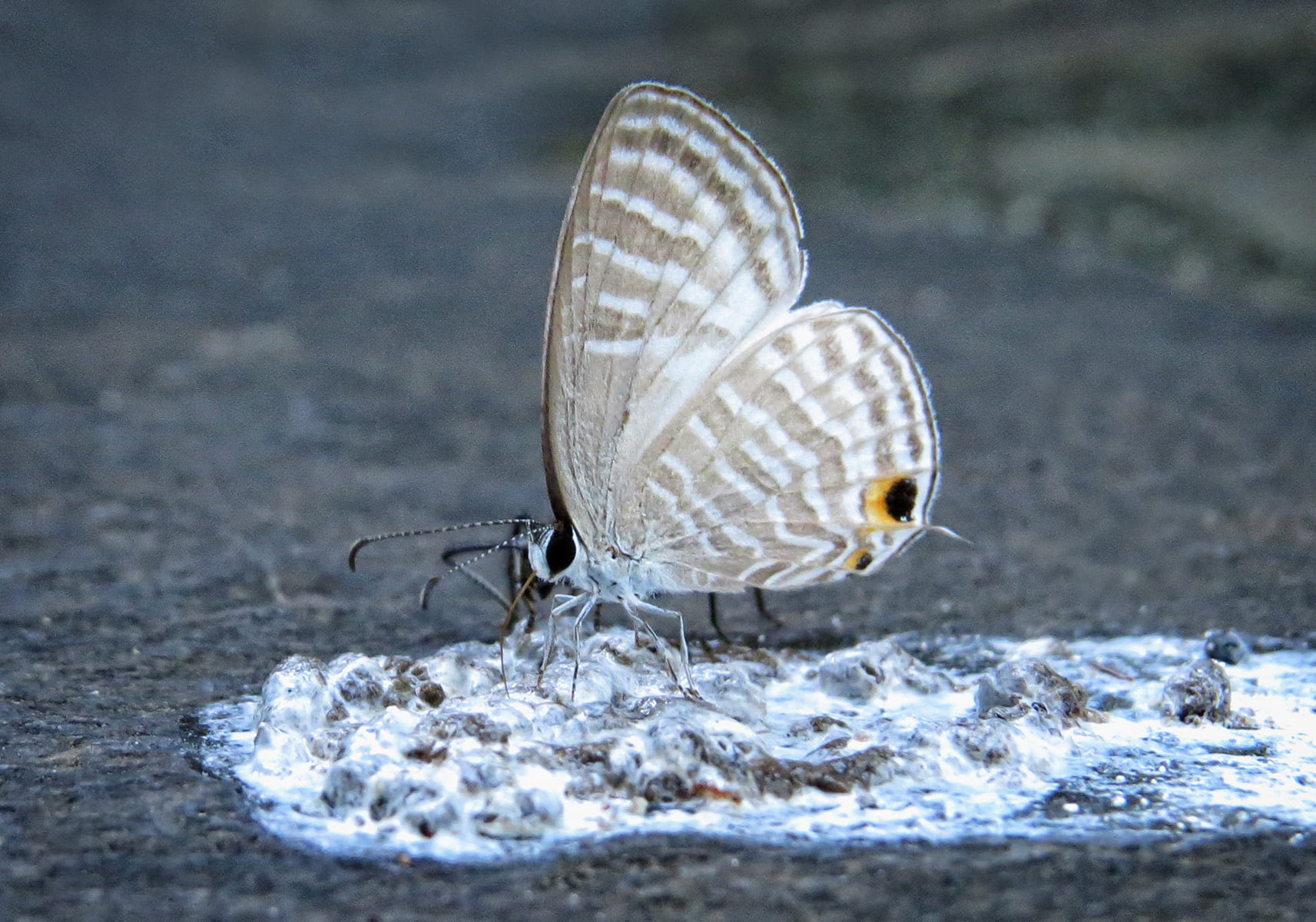Jamides celeno has whitish blue upperwings with dark outlines at the apex of the forewings in males, in females the wings are whiter or brown with wider dark outlines on both wings. The undersides of the wings are gray to light brown with whitish stripes. The bands in the post discal forewing area are a continuation of veins 3 to 7. Each hindwing has black spots with an orange crown in the tornal region and a filamentous tail with a white tip located at the end of vein 2.
Larva: larvae of Jamides celeno are cylindrical, pale yellow in color, black head capsule, body surface covered with smooth and long setae. The color becomes pale or dark green with a reddish-brown lateral stripe and the seta shortens on the next instar.
Pupa: the pupa of Jamides celeno is pale yellowish brown with brown and black spots, has a typical lycaenid shape, about 9 – 10 mm long.


